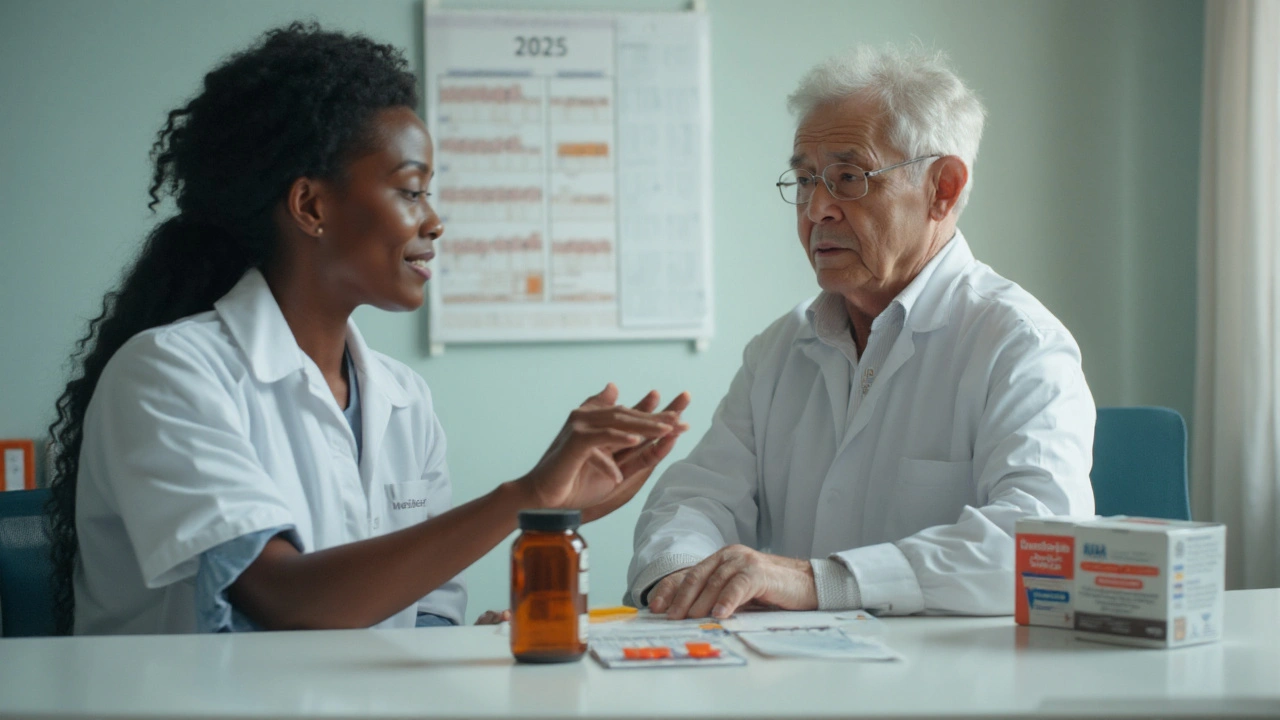Parkinson's Disease: What You Need to Know Right Now
Parkinson's disease is a brain condition that slows down movement and can make everyday tasks feel harder. It shows up when the cells that make dopamine – the brain's "feel‑good" chemical – start dying off. Without enough dopamine, muscles get stiff, tremors appear, and balance gets shaky.
Spotting the First Signs
Most people first notice a slight tremor in one hand or a feeling that their arm is heavier than usual. Other early clues are:
- Slower walking or trouble turning quickly
- Stiffness in the neck, shoulders, or legs
- Changes in handwriting – letters may get smaller
- Problems with facial expression, making the face look less lively
If you or someone you know shows a mix of these signs, a neurologist can run a simple exam and sometimes an imaging test to confirm the diagnosis.
How Doctors Treat Parkinson's
There’s no cure yet, but medicines can keep symptoms under control for many years. The most common starter is levodopa, which turns into dopamine inside the brain. Doctors often pair it with a drug called carbidopa to reduce side effects like nausea.
Other options include:
- Dopamine agonists (e.g., pramipexole, ropinirole) – they mimic dopamine’s action.
- MAO‑B inhibitors (e.g., selegiline, rasagiline) – they slow dopamine breakdown.
- COMT inhibitors – they help levodopa last longer.
Choosing the right mix depends on age, symptom severity, and how the body reacts to each medicine. Your doctor will adjust doses gradually, watching for “on‑off” periods where the medication suddenly stops working.
Beyond pills, deep brain stimulation (DBS) is an option for people whose meds no longer help. DBS involves tiny wires placed in the brain that deliver mild electrical pulses, smoothing out movement problems.
Even with medication, everyday habits make a big difference. Regular exercise – walking, cycling, or yoga – can keep muscles flexible and improve balance. Physical therapists often teach “cueing” tricks, like counting steps or using a walking stick, to reduce stumbling.
Speech therapy helps with voice changes and swallowing issues, while occupational therapists suggest kitchen tools or dressing aids that make chores easier.
Eating a balanced diet rich in fruits, vegetables, and omega‑3 fatty acids supports overall brain health. Some people find that staying hydrated and limiting caffeine or alcohol helps control tremors.
Living with Parkinson's also means staying connected. Support groups, both online and in‑person, let you share tips, ask questions, and find emotional backup. Many families set up medication reminders on phones to keep dosing on schedule.
Research is moving fast. New drugs targeting the disease’s underlying protein buildup (alpha‑synuclein) are in clinical trials, and gene‑therapy approaches are showing promise. Keeping an eye on the latest studies can open doors to experimental treatments.
Bottom line: Parkinson's disease can change how you move, but a mix of medication, exercise, therapy, and community support lets most people keep a good quality of life. Talk to your doctor about any new symptoms, stay active, and lean on the resources around you – you don’t have to face this alone.

Amantadine (2025 Guide): Uses, Dosage, Side Effects, Interactions & Brands
- By : Tamsin Riverton
- Date : Sep 9 2025
Clear 2025 guide to amantadine: what it treats now, how to dose it, key side effects, kidney adjustments, and the differences between Gocovri and Osmolex ER.




